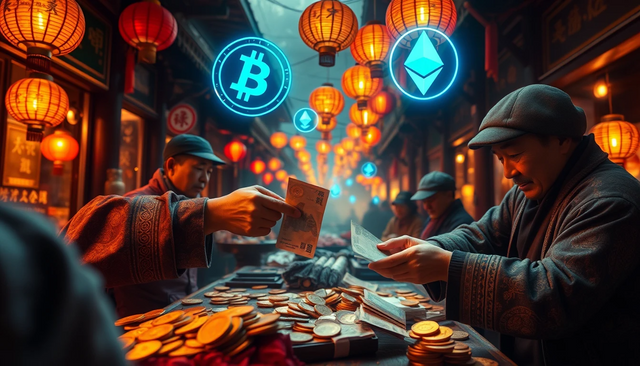The History of Money: From Ancient China to Crypto | Forgotten Origins of Paper Money 💰

Money is one of humanity’s most transformative inventions, shaping economies, cultures, and even the rise and fall of civilizations. The history of money is a fascinating journey—from barter systems to cowrie shells, from gold coins to digital currencies like Bitcoin. But did you know that the world’s first paper money appeared not in Europe but in ancient China?
In this deep dive into the history of money, we’ll explore how currency evolved over millennia, the revolutionary shift to paper money, and how today’s cryptocurrencies are the next chapter in this financial saga. Whether you're a history buff, an economics enthusiast, or a crypto investor, understanding the history of money gives you a clearer perspective on the future of finance.
- The Barter System: Trading Before Money
Before coins and banknotes, people relied on the barter system—exchanging goods and services directly. A farmer might trade wheat for a blacksmith’s tools, or a shepherd could swap sheep for pottery.
But bartering had major flaws:
Lack of a common measure of value (How many chickens equal one cow?)
Difficulty in storing wealth (Perishable goods spoiled)
No standardization (Negotiations were time-consuming)
These inefficiencies led societies to seek better alternatives, paving the way for the history of money to take its next big leap.
- The Birth of Coinage: From Lydia to Empires
Around 600 BCE, the Kingdom of Lydia (modern-day Turkey) introduced the first standardized metal coins. These coins were made from electrum (a gold-silver alloy) and bore official stamps to certify their weight and purity.
Why Coins Changed Everything:
✅ Portable & Durable – Coins don’t spoil, unlike grain or livestock.
✅ Divisible – Smaller denominations allowed precise pricing.
✅ Widely Accepted – Empires like Rome and Persia adopted coinage, boosting trade.
The history of money shows that coins became the backbone of economies for centuries until a groundbreaking innovation emerged in 7th-century China.
- Paper Money: The Forgotten Chinese Revolution
While Europe still clung to gold and silver, China invented paper money during the Tang Dynasty (618–907 CE). Merchants used "flying cash" (feiqian), a form of credit note, to avoid carrying heavy coins.
By the Song Dynasty (960–1279 CE), the government issued the world’s first official paper currency—jiaozi. This was a game-changer in the history of money because:
It was lightweight and easy to transport.
The state-backed system increased trust.
It reduced reliance on scarce metals.
However, overprinting led to hyperinflation, and the Ming Dynasty eventually abandoned paper money in the 15th century. Meanwhile, Europe rediscovered the concept centuries later, leading to modern banking.
- From Gold Standards to Digital Cash
The history of money took another turn in the 20th century when governments moved away from the gold standard (where currency was tied to gold reserves). Instead, fiat money—backed by trust in governments—became the norm.
The Digital Revolution:
💻 Credit Cards (1950s) – Plastic replaced cash for convenience.
🌐 Online Banking (1990s) – Money became digital entries in databases.
⚡ Cryptocurrencies (2009+) – Bitcoin introduced decentralized, blockchain-based money.
Today, crypto is rewriting the history of money, offering:
✔ Decentralization (No banks or governments control it)
✔ Transparency (Blockchain records every transaction)
✔ Global Accessibility (Anyone with internet can use I
Conclusion: The Future of Money Is Here
The history of money reveals a constant evolution—from barter to Bitcoin. Each innovation solved old problems while creating new challenges. Now, as we stand at the brink of a crypto-powered financial revolution, the question is: Are you ready to be part of it?